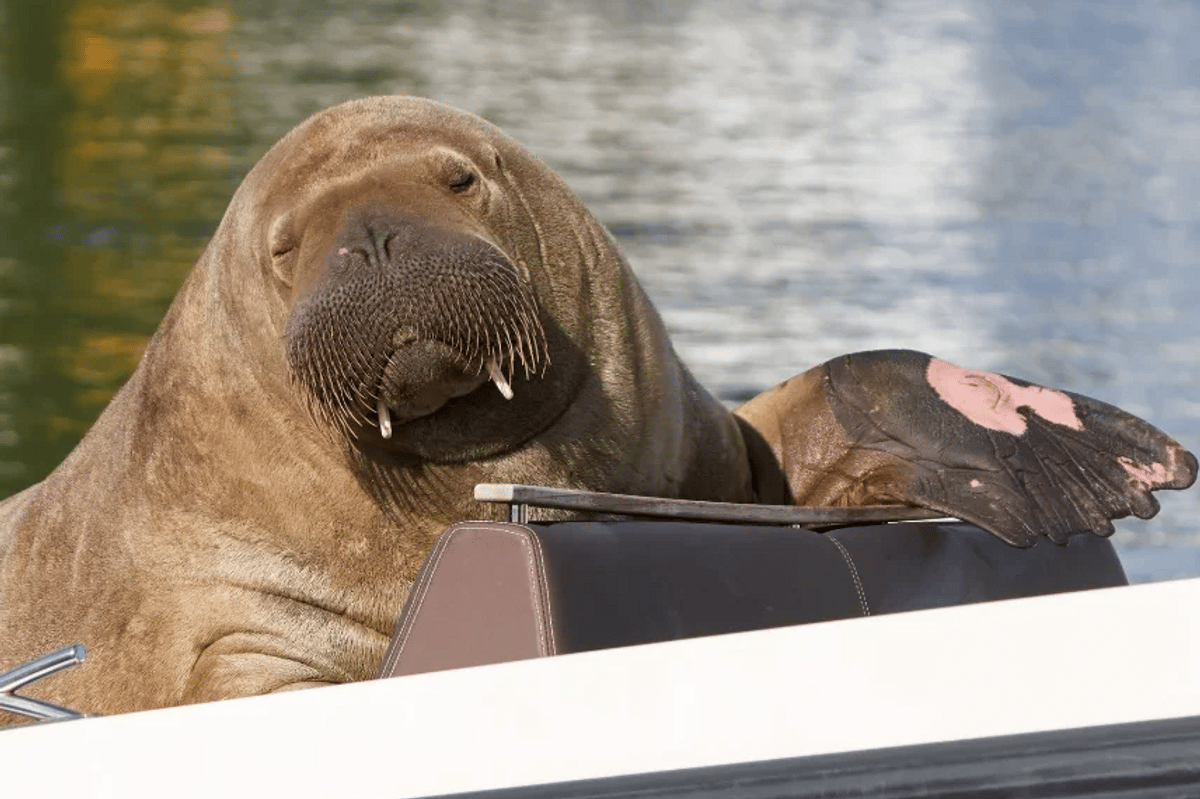
When a 600kg walrus named Freya appeared in Oslo Fjord, she quickly became Norway's favourite celebrity.
Her journey likely began in the Arctic, capturing attention throughout her European tour, with sightings across the UK, Denmark and Sweden, before reaching Oslo.
Watch Freya the friendly walrus. Post continues after video.
Despite warnings from officials, crowds would gather to watch her cheeky antics — namely climbing awkwardly onto boats.
While Freya was not openly aggressive, authorities considered the mammal a hazard due to her sheer size and unpredictable behaviour. She was a wild animal, after all.
"Having a half-tonne heavy walrus — with sharp tusks — swimming among people is pretty risky," said Erik Born, a senior scientist at the Greenland Institute of Natural Resources, as per the BBC.
And, sure, walruses have been known to attack scuba divers and small boats on occasion. But not often.
These low statistics, however, according to Copenhagen Zoo's Zoological Director, are down to the fact that walruses tend to move in remote areas. When they do come into contact with humans, they are capable of inflicting "serious damage", explained the Director, named Mads Frost Bertelsen.
Still, not to be deterred, crowds gathered in droves to delight in the seemingly friendly walrus, who was quickly gaining notoriety.
Sadly, her audiences wouldn't last long.
